type
status
slug
summary
tags
category
icon
password
ID
date
Author
URL
In recent years, Chinese consumers prefer their own brands to international brands, as happened in Japan in the last century.
For people who do not live in China all year round, they may not have found it yet. A remarkable change is taking place in the consumer behavior and habits of the Chinese market.
To put it simply, Chinese local brands are becoming more and more popular with Chinese consumers, while overseas brands are losing their halo in the Chinese market.
This has little to do with the Chinese government’s policy to support local companies, but a bottom-up change since 2016. Since then, in the minds of many young Chinese consumers, the coolest brand in each category has changed from an overseas brand to a local brand.
Once upon a time, Chinese brands were synonymous with poor quality in the eyes of Chinese consumers themselves. But now, Chinese consumers no longer think so, and they even think that Chinese goods are better in quality and design than foreign goods.
Why did it happen? How did this shift happen? It may be incredible for foreigners, let’s try to explain this.
2016: the starting point of everything
In retrospect, the change in China’s consumption trend began in 2016.
In this year, there were two things with far-reaching impact: NetEase Yan Xuan(NetEase’s selected goods) and Pinduoduo go online.
These are two e-commerce Apps, which are owned by NetEase, an established Chinese Internet company, and a new company founded by Huang Zheng.
At the beginning of the emergence of these two e-commerce Apps, people did not realize what they would bring. Because for at least five years before that, China’s e-commerce market was considered saturated, Alibaba and JD.com two giant companies froze the entire market, almost no other opportunities.
However, NetEase Yan Xuan and Pinduoduo quickly caused a sensation in China and began to shake the market share of Alibaba and JD.com in a year.
These two e-commerce Apps represent two different consumption concepts: “consumption upgrading” and “consumption degradation”.
You are reading Panda!Yoo
A blog about modern Chinese culture and consumption trends. If you are interested in Chinese food, drinks, games, movies, novels, dramas, please follow us.
Join 1,565 other subscribers
The concept of “consumption upgrading” holds that China’s economy has made great progress in the past 30 years, and the spending power of Chinese consumers is growing rapidly. The Chinese are tired of low-quality and cheap goods, and they deserve better products.
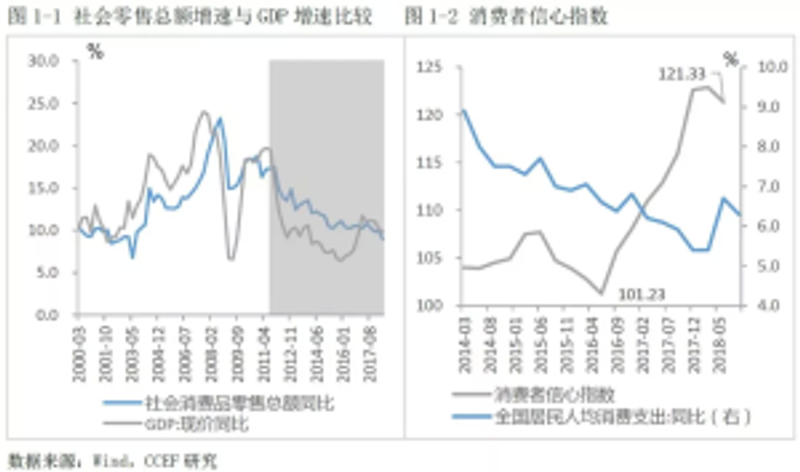
China’s consumer confidence index began to grow sharply in 2016, but per capita consumer spending is still falling. This means that “consumption upgrading” and “consumption degradation” occur at the same time, and people buy better goods at cheaper prices.
The concept of “consumption downgrade” holds that compared with first-tier urban households that have already entered the middle class, China’s future economic growth will be driven by second-and third-tier cities and rural areas. Although the spending power of these consumers is still low, they have a very high degree of growth. Brands should launch low-cost products that meet their spending power and make them loyal customers as soon as possible.
These two concepts seem to be diametrically opposed, but in fact, they have a common core:
China has become the so-called “world’s factory” for more than 30 years, and the vast majority of the world’s high-quality goods are actually made in China no matter what brand logo.
So why don’t the Chinese buy those high-quality goods directly, thus driving down the brand premium?
And that’s what NetEase Yan Xuan and Pinduoduo did.
Therefore, whether it is a firm belief in “consumer upgrading” or “consumer downgrade”. The enterprises born during that period (including NetEase Yan Xuan, Pinduoduo, MiniSo), they all had a short period of disgrace: Go directly to the contract factories of international brands in China and ask them to produce goods of those international brands but remove the logo.
So far, this seems to be in line with the stereotype of the Chinese market in the European and American business communities. But soon, things took a turn for the better.
Because infringement and plagiarism have become unacceptable in the Chinese market.
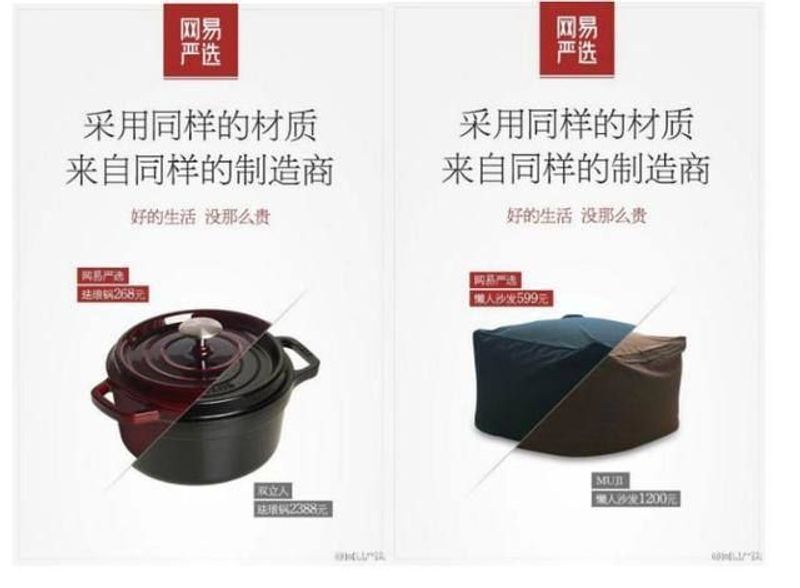
In NetEase Yan Xuan’s first wave of posters, the original goods were compared with plagiarized goods, accompanied by the words: “the same material, from the same manufacturer. A good life is not that expensive. “
In the past 30 years, Chinese consumers have not only increased their spending power but also their sense of business morality. At the beginning of its launch, NetEase Yanxuan was so widely boycotted by Chinese consumers for selling products similar to MUJI that he had to change his strategy quickly.
For China’s Gen Y (and Gen Z), which has just become the main consumer force, they have often never experienced the era of consumer goods shortage in China, so they will not have the consumption concept of “what can be used is justice” in their parents’ generation. They will care whether the goods are original, licensed, and of better quality rather than just cheap.
Just “plagiarizing” a pair of Nike running shoes, even with the same quality and lower price, doesn’t mean you can get customers.
Because shoes are no longer in shortage and imported shoes are no longer “identity tags”. If a Chinese Gen-Y consumer really cannot afford Nike, he also has many other cheap sneaker brands to choose from instead of having to buy a pair of plagiarized Nike sneakers. In the spending habits of the new generation of Chinese consumers, it is humiliating to wear a pair of fake Nike (including a Nike logo), or a pair of plagiarized Nike (looks like Nike without a logo).
In addition, many Nike running shoes are not designed to suit the aesthetics of Chinese consumers (as is Adidas), and they are sold at high prices in China only because they are Nike. A sneaker brand can never copy Nike to separate Nike’s customer base in China.
But fortunately, when these factories that make high-quality sneakers for overseas brands get rid of the restrictions, they are finally able to hire local designers to design styles that Chinese consumers like.
This is also happening in the food, clothing, sundries, electrical appliances and smartphone industries.
How to say goodbye to “plagiarism” and “infringement”?
After simple plagiarism fails, Chinese brands are eager to find ways to mass launch designs that do not infringe on any intellectual property rights.
At this time, Chinese traditional culture entered the sight of businessmen.
It is easy to understand that ancient China had a glorious history, and the ancients left behind a large number of artworks and cultural symbols, and what is even better is that all of these are legally public materials and can be used at no cost.
Some elements from Hanfu were first integrated into the design language of Chinese goods, which is why the consumption change involved in this article first occurred in the field of clothing and shoes.
Before the consumption trend changed, Hanfu was already a sign of popularity among young people in China. But Hanfu is a very complex ancient Chinese dress, just like European medieval clothing, although it is good-looking, it is difficult to be used as a daily dress.
Chinese clothing companies hire designers to simplify these designs from Hanfu and integrate Hanfu elements into modern clothes and sneakers, creating the concept of “Guo Chao”(AKA national hip, Chinese Style Fashion, “国潮”).
Some street culture style Guo Chao. From Shan Qian Chi
The initial performance of the Guo Chao is a bit like an imitation of American street culture. At that time, the “Guo Chao” merchandise often had the style of street graffiti (highly saturated colors, thick lines, and messy patterns), but all the visual elements were replaced with traditional Chinese visual elements, such as the sun, moon, tiger, crane, mountains and rivers, Guan Yu and so on.
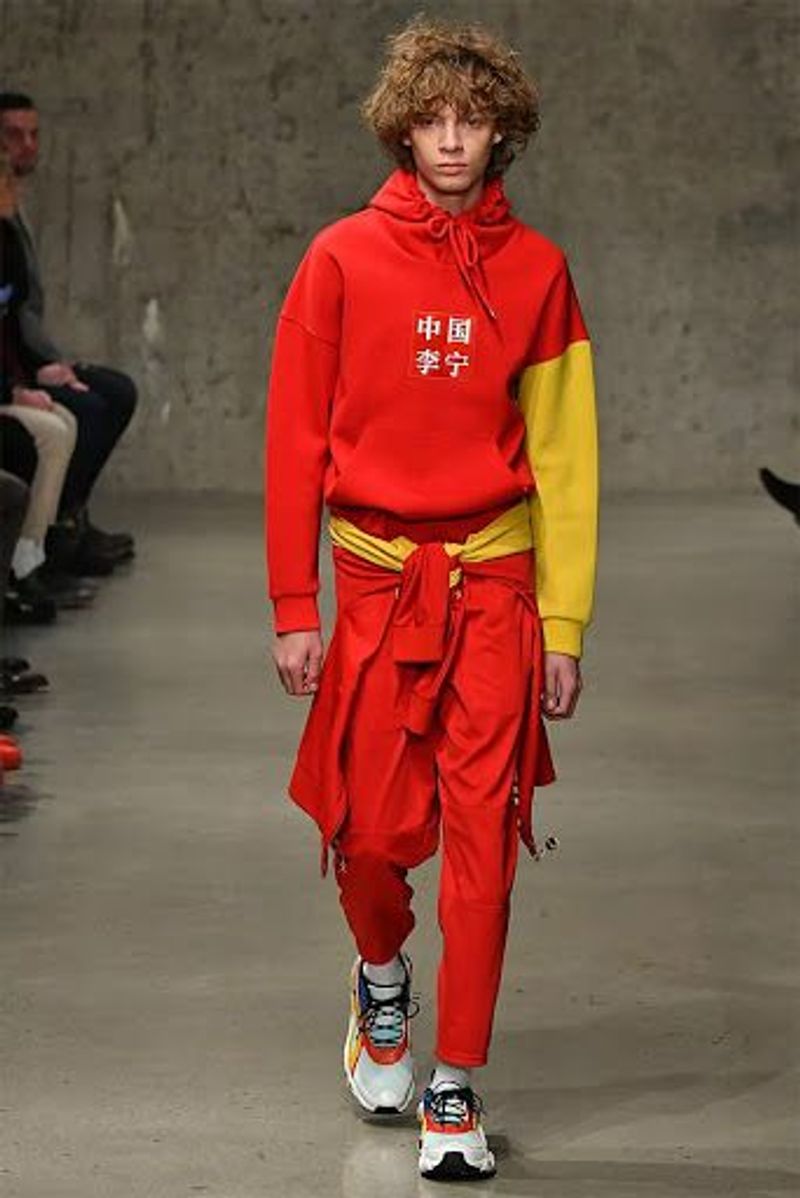
China Li Ning
But soon, it gradually broke away from the influence of American street culture and began to develop its own style. Li Ning, one of China’s most famous sports brands, launched its Chinese style fashion sub-brand “China Li Ning” in 2018, pushing the Chinese design language to a new paradigm. It uses the color and style of the Chinese flag to design clothing and sports shoes and has been successful.
Its competitor Anta has partnered with the Imperial Palace to make a series of very beautiful sneakers, in which you can’t find any clear element from a cultural relic, but any Chinese can recognize it as “Chinese style” at a glance.
Guo Chao is not only limited to the application of Chinese traditional elements, the cultural symbols after the founding of the people’s Republic of China have also been widely used.
For example, Li Ziqi used the 1980s typesetting of China’s most authoritative media People’s Daily on one of her Luosifen packaging. Nowadays, not everyone in China is a loyal reader of People’s Daily, but this design is deeply loved by consumers.
Because as a cultural symbol, People’s Daily reminds consumers of their childhood. In that era of lack of information, they can only understand the whole world through People’s Daily.
Similarly, there is a joint name between a perfume company and White Rabbit Candy. From today’s point of view, White Rabbit Candy is not a delicious candy. In fact, after the reform and opening up, the White Rabbit has lost its market position in China.
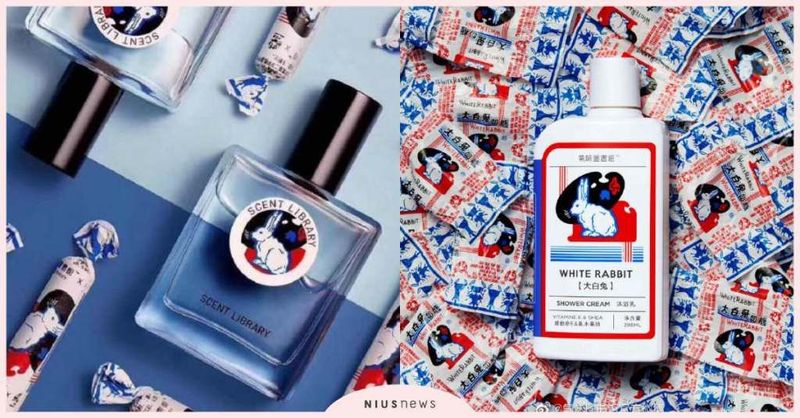
But as a cultural symbol, White Rabbit Candy represents the sweetest collective memories of Gen-Y Chinese consumers in their childhood. At that time, it seemed that every Chinese grandmother had a glass bottle full of White Rabbit Candy. Their children will be rewarded with a White Rabbit Candy after doing a good deed.
In fact, the Chinese rarely use perfume, and many buyers of this perfume are buying it for the first time.
Although the perfume comes from a local brand in China, its price is similar to that of Bulgari’s Darjeeling Tea and is highly sought after by Chinese consumers. This was completely impossible in the past.
Affected by this trend, some foreign brands are trying to accelerate their localization in China. Balenciaga, for example, launched a series of down-to-earth marketing, in August 2020 but received widespread poor reviews on Chinese social networks, and even some commented that the marketing insulted the Chinese.
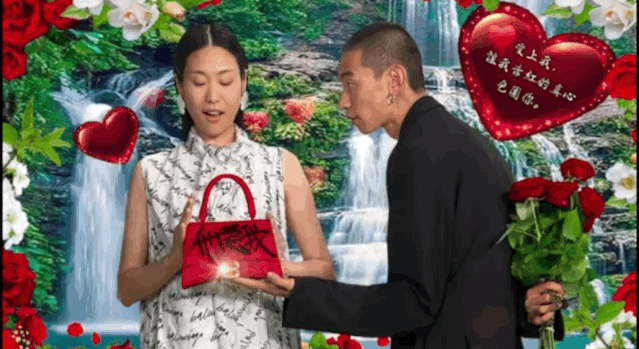
Balenciaga launched its down-to-earth marketing in China in the summer of 2020, using the style of a Chinese village photography studio in the 1990s. I have to say, it is very serious about the restoration of this style in history. But the planners of this case may not know that the Chinese do not miss that memory.
The person planning new summer products for Balenciaga’s Chinese market may not be Chinese, which makes it difficult for him to tell what is good in China’s collective memory of the past and what is hopes will never be recalled.
These examples show that unless a designer has exactly the same growth experience as the consumer he is about to face, he will not even be able to predict the next popular element in China. This makes it difficult for overseas brands to compete with Chinese companies on this point and brings more competitive advantages to local companies.
How does “made in China” support “design in China”?
In the eyes of many overseas consumers, made in China seems to be synonymous with poor quality.
However, the change in consumption trends in China proves that the quality of “made in China” has improved significantly.
Because only when the quality of the product is close in terms of basic parameters, it is the details that have been ignored (such as cultural significance) that affect consumption decisions.
A similar phenomenon occurred in Japan in the last century.
In the first half of the 20th century, there were also a large number of “plagiarism” and “infringement” in Japanese industrial products.
After the end of World War II, because Japan’s economy was almost destroyed by the war, consumers’ love for European and American brands reached a level of worship in the first two decades.
But as the Japanese economy rebuilt, the market changed dramatically when they could start producing goods of similar quality to those in Europe and the United States. The trade war between Japan and the United States in the 1980s is very similar to the trade war between China and the United States in 2019.
At that time, the United States accused Japan of dumping shoddy and infringing goods. But Japanese consumers believe that their own products are better than those of American brands. Because Japanese brands are more in line with the habits of Japanese consumers and have more Japanese designs, it can’t come from plagiarism.
It’s like Red Bull quickly lost its original market in North America when Monster Energy was established in the United States in 2002. It’s hard to say that Monster Energy and Red Bull are too different in taste and function, but Monster Energy represents a new era of American culture, while Red Bull comes from old-school European culture.
But if the Monster Energy were an extremely bad taste, had no pick-me-up effect at all, or were completely copied from Red Bull, then none of this would have happened.
Once this happens, the label of “international well-known brand” will change from a halo to a deduction, regardless of whether the brand is a real international well-known brand or camouflage. MiniSo and Genki Forest, which were born in the early days of the “consumer upgrading” era, have been trying to remove the disguise of their “Japanese brands” in the past year.
The improvement in the quality of Chinese products is largely due to China’s two manufacturing innovation centers, Yiwu, and Shenzhen.
If you are a gadget enthusiast, you may have found that more than 80% of innovative gadget shipments on Indiegogo and Kickstarter in the past few years came from Shenzhen (or Yiwu).
[sociallocker id=”5614″]
I won’t explain too much here why these two cities can do this, but in a nutshell, these two cities are currently the places with the highest concentration of low-and middle-end manufacturing on the planet.
This means that if you are working on gadget industrial design in Shenzhen, your workflow is: draw a drawing in the morning, buy some parts and raw materials in the nearby market at lunch, find a factory to place an order in the afternoon, and you get a prototype product in the evening.
This process takes at least 30 days anywhere else on earth. Designers in Germany, Japan, Britain, and the United States need to work for a long time in the draft paper stage. Because experimental production costs not only a lot of money but also a lot of time, designers must ensure that the drawings for the next stage are almost perfect.
But in Shenzhen, you don’t need to stay in the design stage for so long. Whether a design is effective or not, you can put it into production and test it quickly and cheaply.
This means that even use the “random combination” way, companies in the two cities are more likely to find a “better design” of a product than brands elsewhere.

Of the six ultrasonic humidifiers sold by MiniSo, the one in the upper left corner is suspected of plagiarizing MUIJI.
We mentioned this in MiniSo’s startup story, which copied MUJI’s classic humidifier in the early days. But soon, they abandoned that design. Because compared with the plan given by Shenzhen, the “classic design” that MUJI is proud of is not loved by consumers at all.
We also explained in AngryMiao’s story how this industrial advantage will completely change a consumer goods category.
China’s manufacturing advantages in low-and middle-end consumer goods will play a role not only in China. Many Chinese companies that take advantage of this are beginning to rise in the global market, and they will become the next generation of “international brands”.
[/sociallocker]
This is not surprising, just as Americans and Europeans in 1960 would not have thought that they would buy large quantities of Sony in half a century’s time.
- Author:NotionNext
- URL:https://pandayoo.com/2020/09/30/young-chinese-consumers-no-longer-worship-international-brands
- Copyright:All articles in this blog, except for special statements, adopt BY-NC-SA agreement. Please indicate the source!